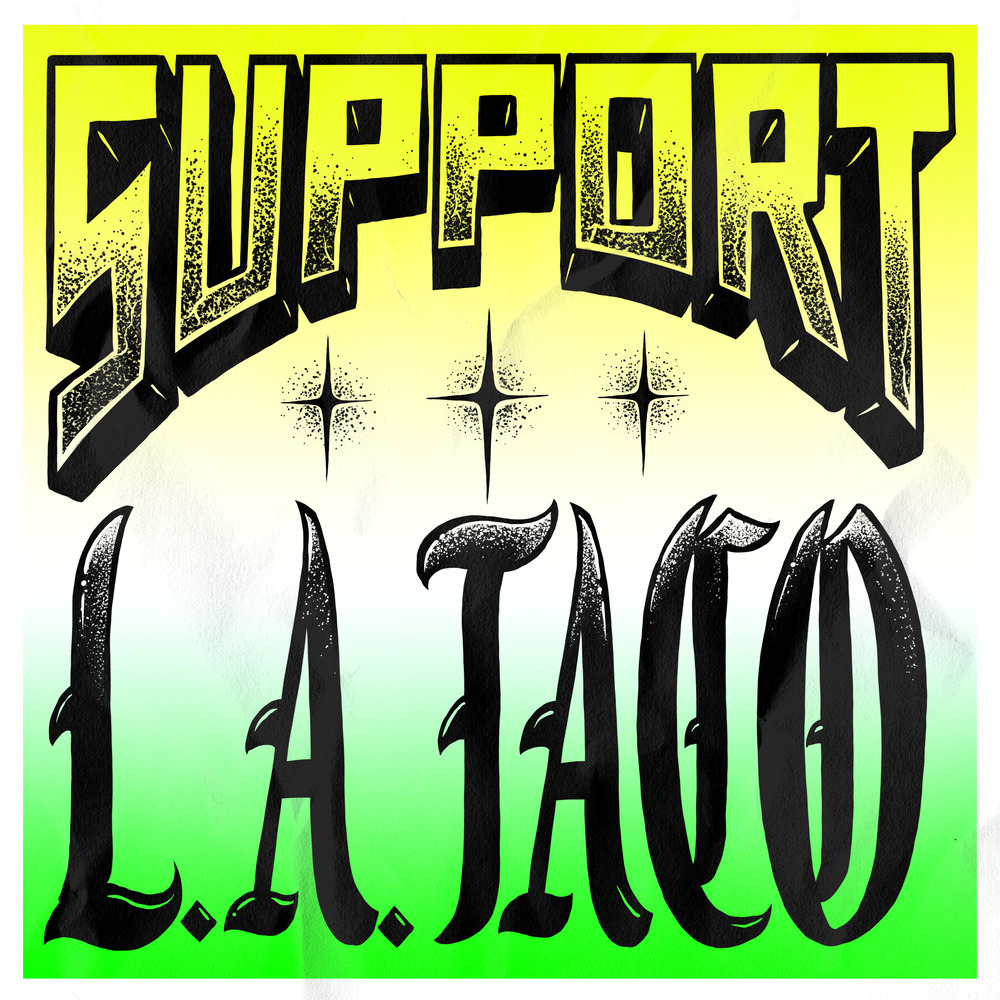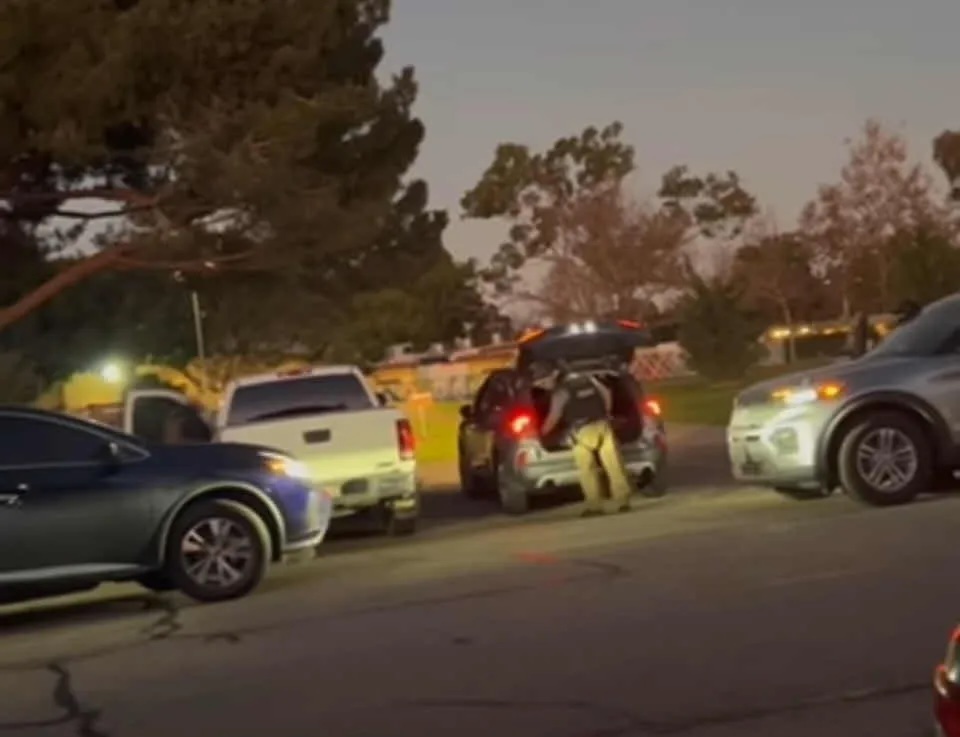In California and several other states and cities in the United States, we Indigenous people Specifically, Zapotec and Mixtec, from the state of Oaxaca, Mexico, make their way to the streets of Los Angeles.
Many of us who grew up eating tortillas and chiles daily found our calling in becoming taqueros and taqueras here.
On the border with Mexico, in Southern California, and the Central Valley, it is common to identify areas and neighborhoods where our presence is becoming more noticeable and visible day after day. In these cities, you will find establishments with products generically called “from Oaxaca” and see establishments that use unpasteurized briny quesillo self-imported from Oaxaca, not “Queso Oaxaca.” You will see our large tortillas with texture, aroma, and flavor made from heirloom corn. In these places, we supply ourselves with connections with our communities of origins back home in Mexico through our food and drinks.
We are a powerful presence that resists assimilation in California. We enunciate through our languages in our daily lives mixed with our daily mix of an Indigenous language, Spanish, and English in our words. It has turned into that after a long trajectory where constant migration has been part of our life, Zapotec and Mixtec peoples now have third-generation migrant communities here in California.
However, not all Indigenous people living in California have a long migration history. Mixe people, also known as Ayuukjä'äy, which translates into their language as Ayüuk, “people with a florid language,” are people who migrated to the USA as late as the 80s.
Mixe people lived in the Mixe region in Oaxaca, in northern high and low areas of Oaxaca. They are neighbors with our Zapotec community and our lands, known for their wind instruments. The famous and distinguished Center for Musical Training and Development of Mixe Culture (Centro de Capacitación y Desarrollo de la Cultura Míxe, CECAM) is actually located in Santa Maria Tlahuiltepec.
They also call themselves the “never conquered” because neither Mexican, Zapotec, nor Spanish people could subdue them.
Before establishing themselves in California, the Mixe community migrated to the city of Oaxaca, Tijuana, and Mexico City. Mostly in Mexican urban areas where it is frequent for people from rural areas to live. This is due to poor living conditions, forced removal of land, and lack of opportunities for young people.
Tacos Tamix and their three trucks, and Leo’s Tacos, with their eight food trucks located around the city, are both Mixe-owned and operated.
In urban areas like L.A., the Mixe community learned one of the noblest professions in the city that will always have work; they became taqueros (taco makers). They learned the art of tacos little by little due to their migration. They learned the techniques, the seasonings, and the abilities of the art for preparing street tacos to create their style. For this reason, in Oaxaca city, Mexico City, Tijuana, Ensenada, Toluca, Aguascalientes, and many other Mexican cities, the Mixe community has establishments where tacos, especially tacos al pastor, are their distinctive dish.
The story of how Mixes became a vital part of taquero culture across Mexico and California goes like this: Two Mixes went to find work in Mexico City, where al pastor is a way of life, and they became taqueros. They grew tired of working for someone else and decided to start their own taco stand. Then they branched off to other big cities in Mexico and the U.S. and made an open call to their communities to let them know that if they decided to immigrate, there would be work for them. Fast forward to 2022 in Los Angeles and Mixes control some of the most iconic al pastor destinations in the city.
Tacos Tamix and their three trucks, and Leo’s Tacos, with their eight food trucks located around the city, are both Mixe-owned and operated. Aside from these institutions that form lines on weekends for their delicious tacos, there are a handful of new Mixe-owned taquerías that are earning loyal customers for their sazón. Juquilita Tacos in South Central and Taquería Juquilita across the street from Hollywood Forever cemetery, where the country’s largest Dia de Muertos celebration takes place, are quickly becoming neighborhood favorites for those in the know. It’s also becoming more common to find Mixe people selling fruits in the streets and tacos on food trucks. In Los Angeles, the Mixes have formed their community little by little.
Taco al pastor, also known as taco de adobaba or taco de trompo, believed to have descended from Lebanese shawarma made with lamb, is the specialty of the Mixe tacos. Pork seasoned with dried chiles, warm spices, and achiote is cooked vertically with a high flame, and it’s sliced little by little and then served with cilantro and onions. A piece of pineapple is added to balance the sweet and sour taste of the taco de pastor. This is one of the most delicious and most affordable meals in the city that not many can resist and one that has risen to iconic status in the streets of Los Angeles.
Both taco places are a symbol of success in a sector of the migrant Indigenous community that lives in California and fights day after day to move forward and also to defend our presence in an environment that sometimes makes us invisible when we are called “Hispanic,” “Latino,” or “Mexican.”
We are Mixe, Zapotec, Mixtec, and Chatino, and now we have learned how to make tacos. Our Mixe brothers and sisters are continuing the evolution of tacos.
Today in Los Angeles, the “never conquered” are conquering the palates from Angelinos with their asada, chicken, buche (pork stomach), steamed beef head, chorizo, tripas (intestines), and carnitas tacos, and burritos, mulitas, alambres, sopes, sandwiches, huaraches, quesadillas, tostadas, but most importable, their unique tacos al pastor.
The Indigenous resistance has several battlefields. From California, the Mixe community resists through their tacos.
Odilia Romero is the co-founder/ executive director of Comunidades Indígenas en Liderazgo (CIELO); she is also an independent interpreter of Zapotec, Spanish, and English for indigenous communities in Los Angeles and throughout California. She has two decades of experience organizing indigenous migrant communities. Her organizing knowledge and experience are highly regarded, with multiple academic publications, awards, and lectures in universities across the United States. Ms. Romero has published on the challenges of organizing in indigenous communities, developing women’s leadership, and preparing a new generation of youth. Her work has also been featured in the Los Angeles Times, the New York Times, Vogue, Democracy Now, and Day Emmy award-winning series Pan Y Circo "Nadie es ilegal migrantes de ida y vuelta." with Diego Luna.







